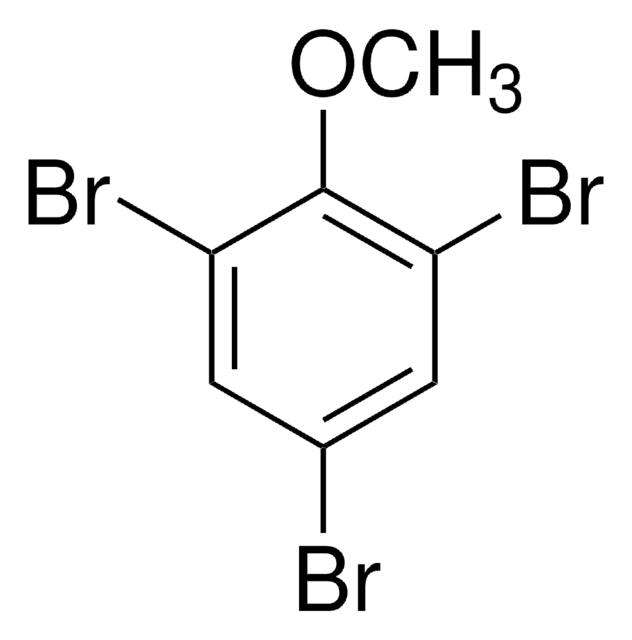137715
2,4,6-Tribromophenol
99%
Sinonimo/i:
1,3,5-Tribromo-2-hydroxybenzene, Bromol
About This Item
Prodotti consigliati
Densità del vapore
11.4 (vs air)
Saggio
99%
P. eboll.
282-290 °C/746 mmHg (lit.)
Punto di fusione
90-94 °C (lit.)
Solubilità
water: soluble 0.007g/100ml at 25 °C
chloroform: soluble
diethyl ether: soluble
ethanol: soluble
methanol: soluble
methylene chloride: soluble
Stringa SMILE
Oc1c(Br)cc(Br)cc1Br
InChI
1S/C6H3Br3O/c7-3-1-4(8)6(10)5(9)2-3/h1-2,10H
BSWWXRFVMJHFBN-UHFFFAOYSA-N
Cerchi prodotti simili? Visita Guida al confronto tra prodotti
Descrizione generale
Applicazioni
Avvertenze
Warning
Indicazioni di pericolo
Consigli di prudenza
Classi di pericolo
Aquatic Acute 1 - Eye Irrit. 2 - Skin Sens. 1
Codice della classe di stoccaggio
11 - Combustible Solids
Classe di pericolosità dell'acqua (WGK)
WGK 3
Punto d’infiammabilità (°F)
Not applicable
Punto d’infiammabilità (°C)
Not applicable
Certificati d'analisi (COA)
Cerca il Certificati d'analisi (COA) digitando il numero di lotto/batch corrispondente. I numeri di lotto o di batch sono stampati sull'etichetta dei prodotti dopo la parola ‘Lotto’ o ‘Batch’.
Possiedi già questo prodotto?
I documenti relativi ai prodotti acquistati recentemente sono disponibili nell’Archivio dei documenti.
I clienti hanno visto anche
Il team dei nostri ricercatori vanta grande esperienza in tutte le aree della ricerca quali Life Science, scienza dei materiali, sintesi chimica, cromatografia, discipline analitiche, ecc..
Contatta l'Assistenza Tecnica.














